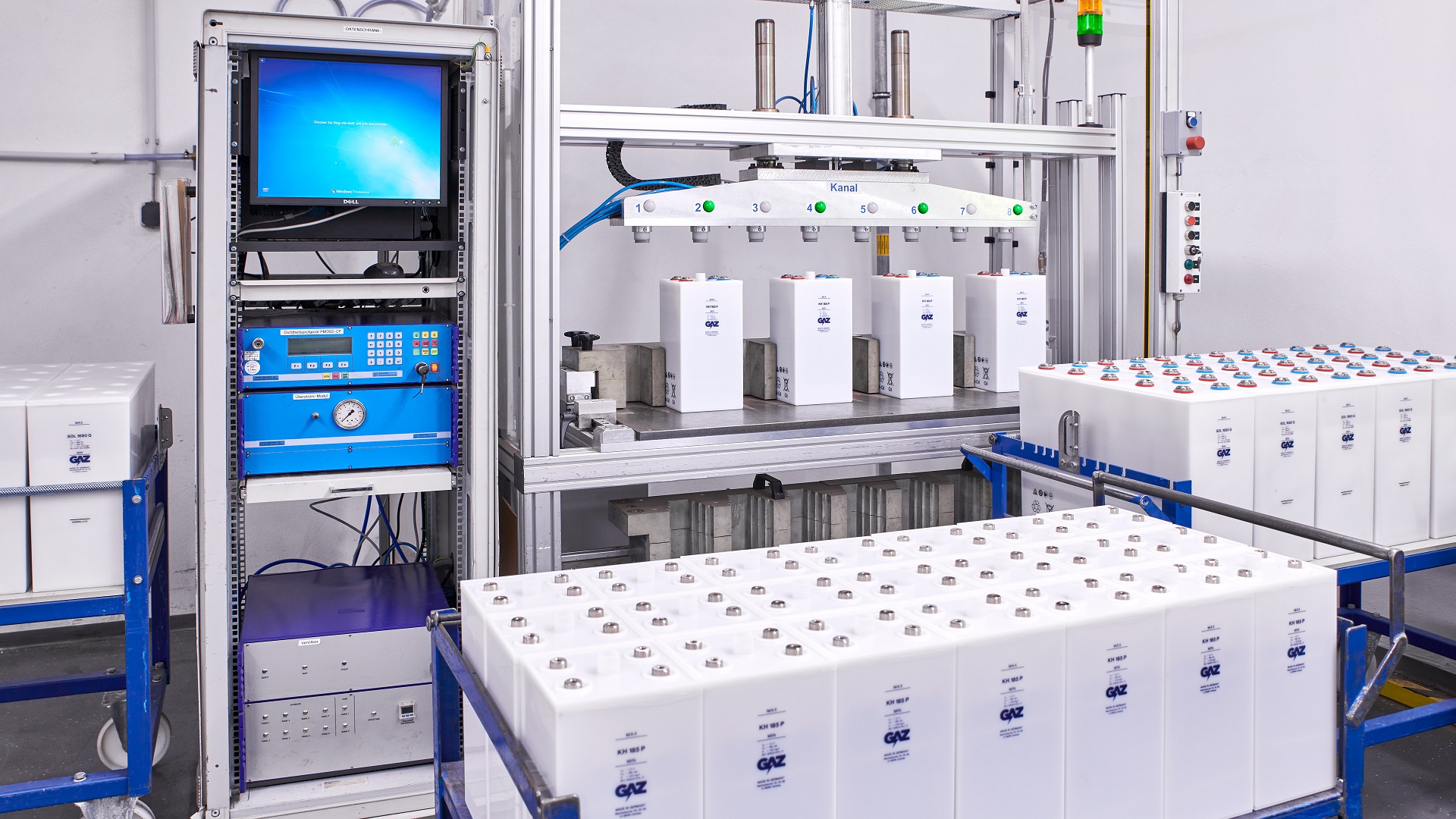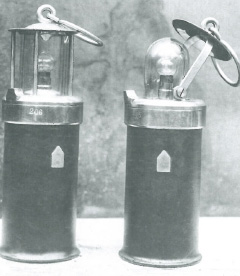Nickel-cadmium cells have been around for more than a hundred years. What was the context in which they originally appeared and how important were they at the time?
Nickel-cadmium batteries are one of the oldest types of rechargeable electrochemical cells. The first were lead batteries, invented around 1880; about a decade later, nickel-based batteries were developed, which we at GAZ have been making since 1907. The first cell of this type was patented in the USA by Thomas A. Edison in 1902, which was less than 3 years after the first Ni-Cd cell was manufactured in Sweden. Incidentally, the fact that rechargeable batteries were patent-protected was the reason why Henry Ford decided he would focus on cars with combustion rather than electrical engines.
In the early 20th century, technologies for storing electricity were in their infancy. The batteries I’ve just mentioned were basically all there was. In terms of energy density, lead batteries were much worse, achieving less than half the performance of a Ni-Cd cell. Ni-Cd batteries can also be repeatedly discharged to almost zero without any impact on subsequent charging cycles. That’s one of the reasons why Ni-Cd batteries have retained their market share to this day.
How were the first Ni-Cd cells and their manufacturing process different from those we use today?
The technology developed rather slowly. The first significant improvement came in 1932 when the process for creating nickel-coated porous electrodes was perfected. A major development occurred in 1947 with a technology that made it possible to recombine the gases that are created during charging. This enabled the development of fully hermetically sealed Ni-Cd cells, such as the AAs, AAAs and similar batteries that we know today. These are probably the best known type, because most people have never encountered vented flooded cells used in industrial infrastructure.
The thirties brought sintered pole plates, and sealed cells were developed after the war. How did these innovations change our batteries?
Sintering means melting nickel powder at temperatures deep below its melting point under high pressure. The results are highly porous plates covered with nickel(II) hydroxide. The negative pole is the same plate, except with active cadmium. The benefit of sintered plates is that they are thinner than the previously used pocket design, which means they have a higher surface to volume ratio and in turn a higher energy density. Then you add a separator between the positive and negative plates, roll them together and store them in a case to create the familiar AA, AAA and similar types of batteries that we use today.
What other technology milestones were there on the journey towards modern Ni-Cd cells and how did they impact their production?
Vented Ni-Cd cells (also called wet or flooded cells) are used wherever you need large capacity, long life and quick discharging. Traditional Ni-Cd batteries are sealed, which means that the charging gas is recombined and no gas is released unless you heavily overcharge them. Vented cells, however, have a vent that is open to atmospheric pressure or a low pressure release valve, which opens when the cell is quickly overcharged or discharged to release all the generated oxygen and hydrogen. At the same time vents are protected with a ceramic flame arrester disc that prevents external flame or electric spark source from entering the cell, making it explosion proof.
This makes the battery safer while reducing its weight; its construction is also simpler and more economical. Vented Ni-Cd batteries have a long life, 20 years or more depending on the type, and can operate under extreme temperatures (from -40 to 70°C) without the need to regulate external temperature or precisely control their charging parameters.
Did the practical uses of Ni-Cd cells change over time as competing technologies developed? Did they lead to any changes in the design and manufacturing of the cells?
Nickel-cadmium batteries are a robust and proven technology that provides a fairly average level of energy density, but a high power density. Even though the basic principle has been known for 120 years, the cells are still a very reliable solution that continues to be used for example in aviation. But not only that – Ni-Cd cells can also be found in submarines, railroad equipment, medical devices, backup sources of energy, battery-powered tools, naval equipment etc.
Ni-Cd and Ni-MH cells are no longer used in cases where battery size is a key factor, but are increasingly often found in large energy storage systems aimed at reducing peak loads, balancing output or providing a backup source for medium and large businesses. In fact, we are making one such battery with a capacity of 1.6 MWh for our own use in Bochemie, the parent company of GAZ, where it will reduce total annual costs of energy by up to 75 percent.
Is the manufacturing of Ni-Cd cells in any way significantly different from other cells?
For example the manufacturing of lead batteries carries a major health risk, because you’re exposing yourself to lead. For this reason, workers must wear special equipment and follow decontamination procedures. When manufacturing Ni-Cd cells, you need to take into account the dangers posed by cadmium, but these can be eliminated by the right HVAC system and by wearing personal protective equipment. Once a Ni-Cd cell is finished and sealed, it carries no health risks. And the recycling process after the end of its lifetime is much more efficient than with other types of batteries.
The manufacturing of Li-ion batteries requires observing strict protocols to ensure that the cells are not contaminated by foreign material and exposed to moisture, because this could cause battery failure or even trigger combustion. The used materials are also significantly more expensive than in the production of Ni-Cd cells, but on the other hand the manufacturing process itself is simpler.
What is the future of Ni-Cd cell manufacturing in terms of processes and technologies? Any major innovations on the horizon?
The basic principle of the Ni-Cd cell remains constant and there is little room for innovation. But we innovate the applications, which means adjusting the parameters of our cells based on our experience and feedback from the sales team. Because we have been making Ni-Cd batteries for a very long time, we have the know-how to innovate for example in batteries intended for solar systems which enables us to make and deliver to customers complex solutions in the form of batteries with a capacity of several MWh.
Recently, we also launched a new battery on the market after more than 7 years of development, which is intended for the aviation industry as one of our main customer segments. The battery utilises a unique combination of sintered and plastic-bonded electrodes, taking the best from both worlds: very good performance parameters, safety and longer battery maintenance intervals. This directly saves costs to our customers, who are airlines and operators of aircraft of the A320 family, because we have extended the regular checkup interval to conform to the standard maintenance cycle, so there’s no need to take the plane off duty just to do a battery check.
You’re currently finishing a new factory in Dammam, Saudi Arabia. Is there anything specific in terms of used technology?
We took the more than 135 years of experience with making batteries gained in Germany and Czechia, including new processes, automation, safety procedures and stringent quality checks, and transplanted them to Saudi Arabia. It’s a very interesting project both for me personally and in terms of the company’s strategic growth. Only very few German or Czech companies build factories in the Arab world.
The actual factory has one huge advantage. We’re starting completely from scratch, which allowed us to streamline some processes – we designed the layout ourselves without any historical restrictions weighing us down, and could make sure the individual processes are functionally linked together. Because the project is of course very complex, there will be two stages. In the first stage, where we are now, we are mainly focusing on collaboration between the individual manufacturing plants.
This allows us to share gained know-how with colleagues in Saudi Arabia and train a specialised team of Ni-Cd battery manufacturers on the Arabian Peninsula. At the end of the process, there will be a factory in Dammam whose capacity and quality will fully match the GAZ factory in Zwickau, Germany.






